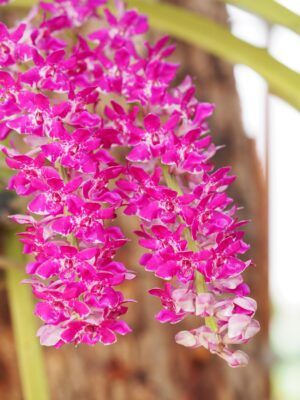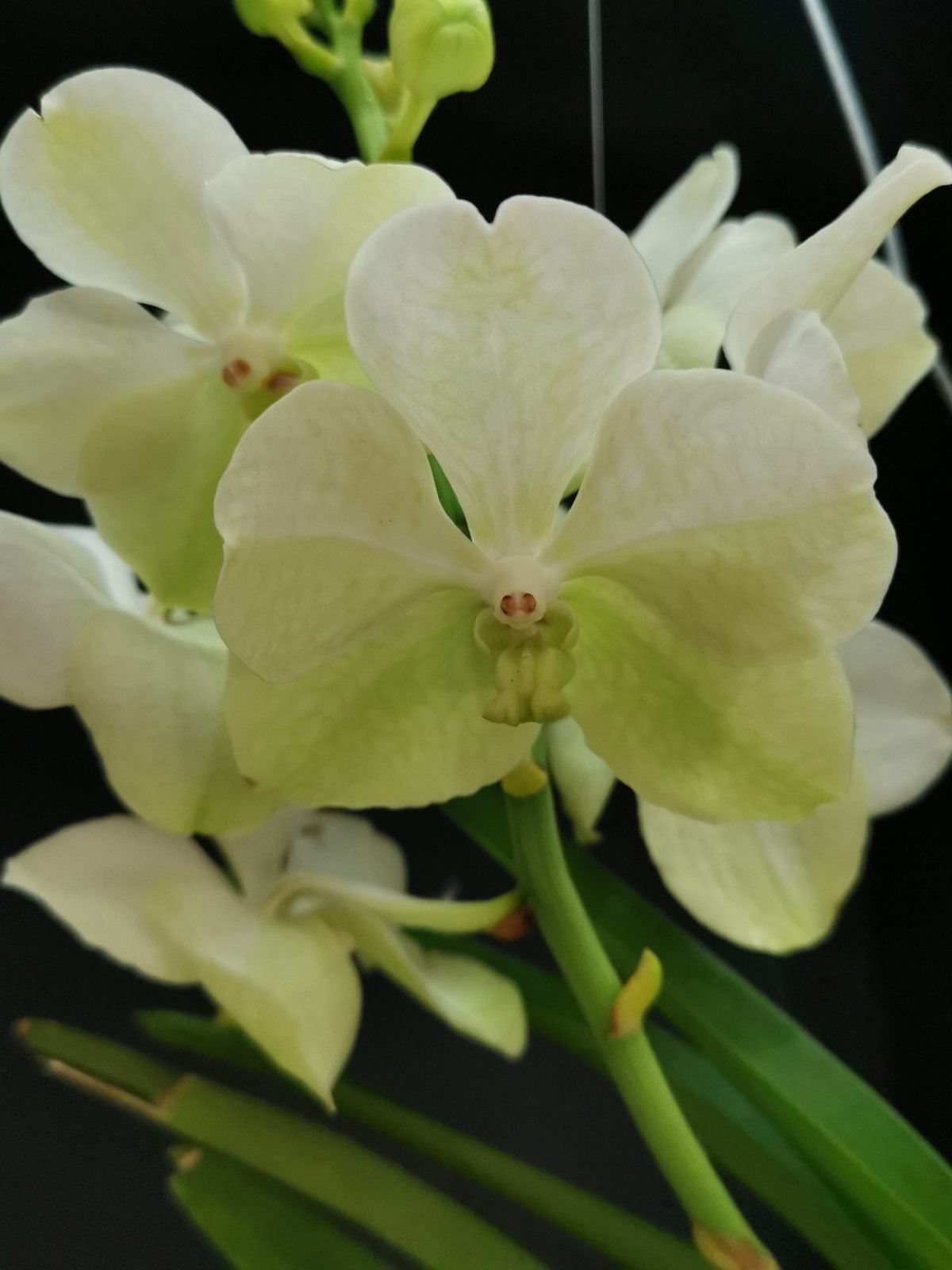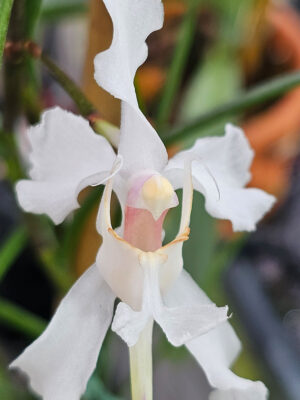Description
Rhynchostylis gigantea White: The Monumental Beauty of Fragrant
Description:
Rhynchostylis gigantea var. white, also known as White Giant Vanda, is an impressive epiphytic orchid native to Southeast Asia. Appreciated for its long flower spikes filled with fragrant white flowers, this ornamental orchid is a statement piece for collectors and admirers of exotic plants.
Characteristics:
- Size: Large adult plant, capable of exceeding 1 meter in height. Ideal for cultivation in hanging pots or directly on trees (in regions with suitable climates).
- Light: Intense filtered sunlight. Requires abundant light, but avoid direct sunlight during the hottest hours of the day.
- Temperature: Wide temperature range, from mild (15°C) to hot (30°C). Prefers mild nighttime temperatures.
- Humidity: High humidity (between 60% and 80%).
- Watering: Water abundantly when the substrate is almost dry. Ensure good drainage to prevent root rot.
- Fertilization: Use a specific orchid fertilizer diluted every two weeks during the growing season (spring and summer).
- Flowering: Blooms in spring and summer, producing long spikes with fragrant and durable white flowers.
Care:
- Rhynchostylis gigantea White requires a pot with large holes to ensure water drainage. Use well-aerated substrates, such as large pine bark or charcoal plates.
- Provide intense filtered sunlight in well-lit environments. Protected balconies, winter gardens, or locations near windows with adequate light are ideal.
- Water according to the plant’s needs, observing the substrate. Avoid overwatering and allow partial drying between waterings.
- High humidity is crucial for this orchid. Use humidifiers, vaporization trays, or group plants to increase ambient humidity.
- Fertilize during the growing season to stimulate abundant flowering.
Tips:
- Rhynchostylis gigantea White is recommended for growers with experience in orchids due to its size and specific requirements.
- Provide adequate support for the long flower spikes, preventing them from bending or breaking under the weight of the flowers.
- Watch for signs of pests or diseases such as scale insects, aphids, or leaf spots. Take corrective measures as soon as you identify them.
- Occasional pruning of aerial roots may be necessary to control the size of the plant. Consult an orchid specialist before pruning.






Reviews
There are no reviews yet